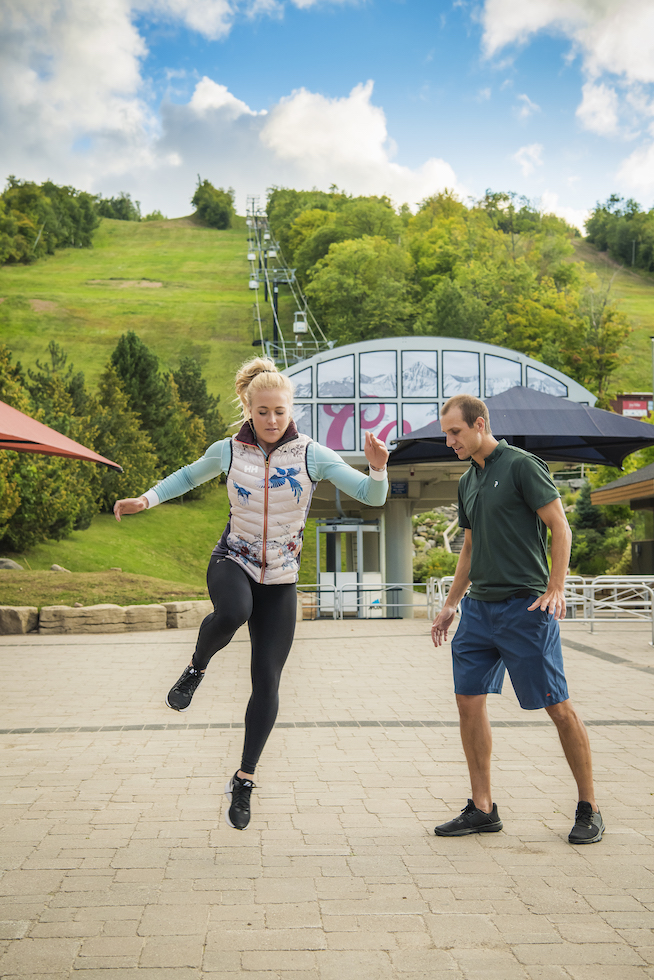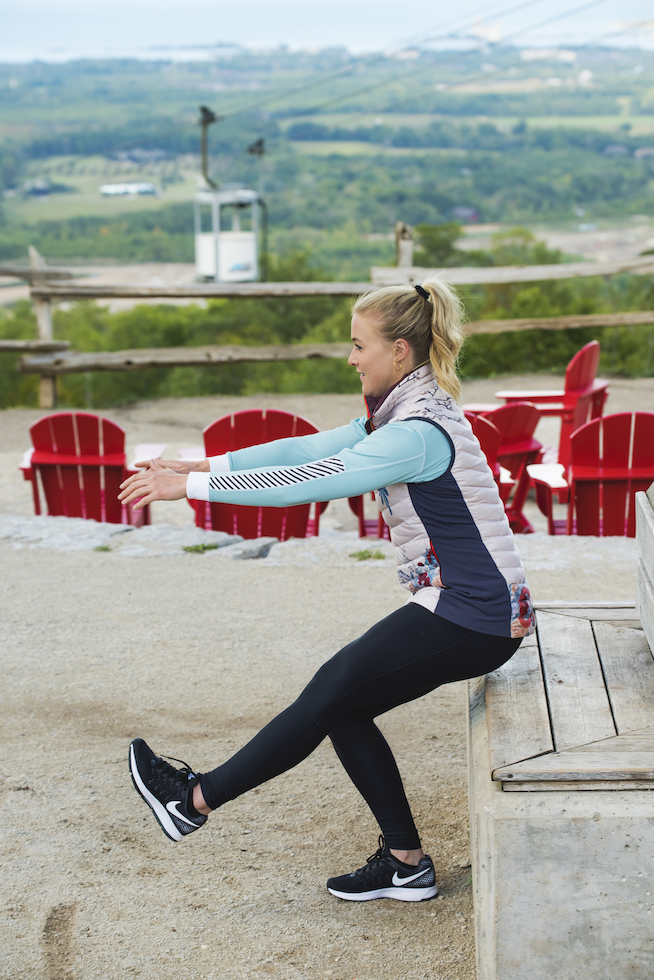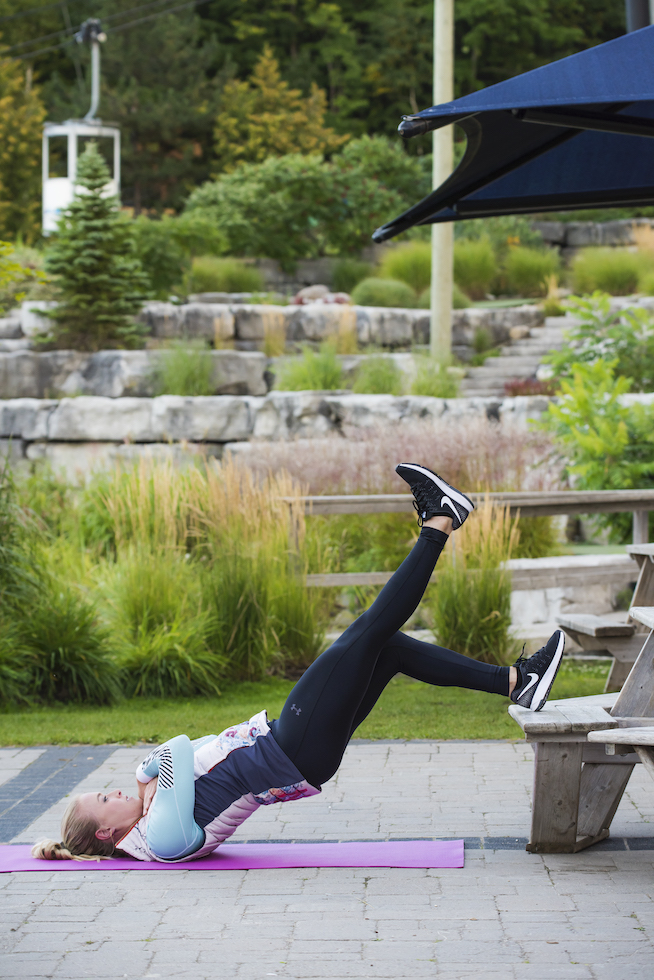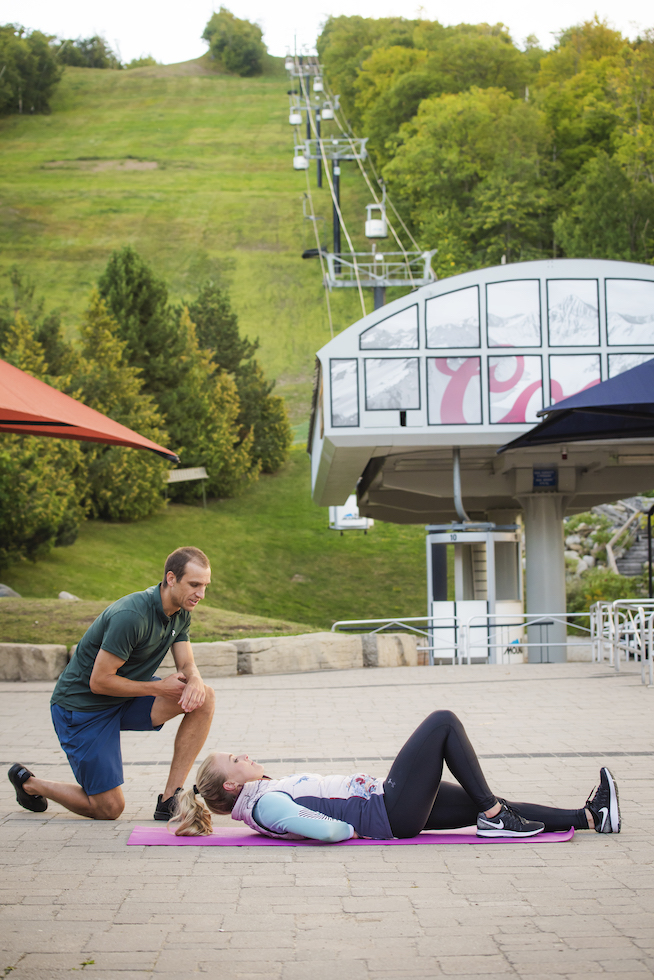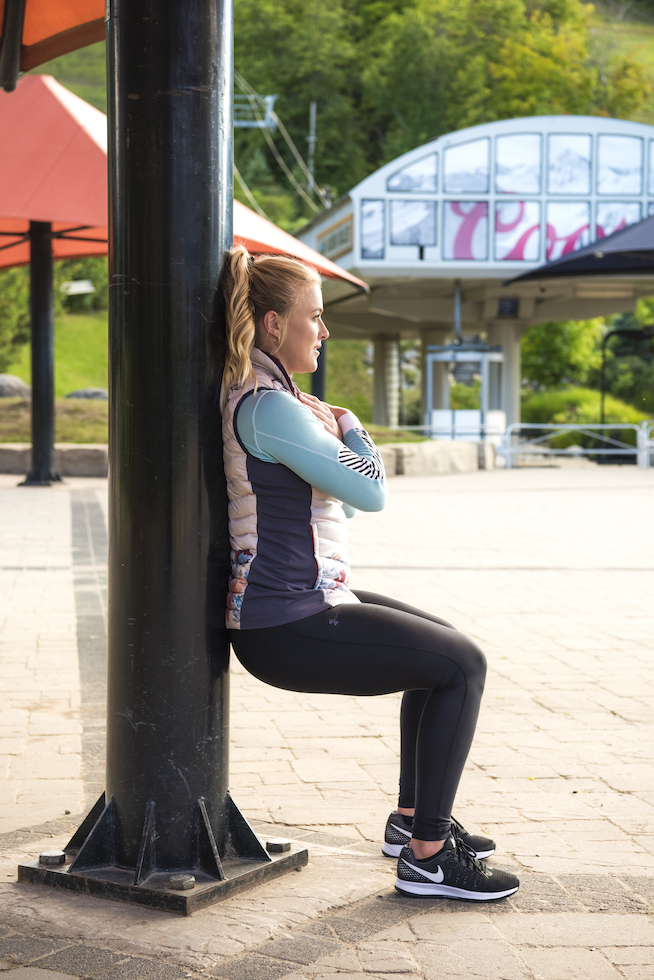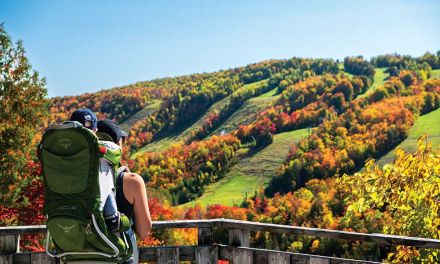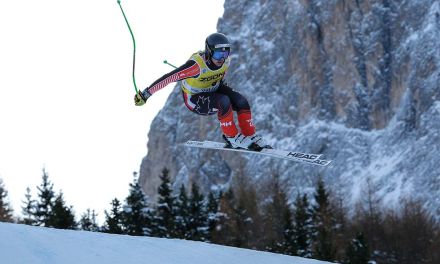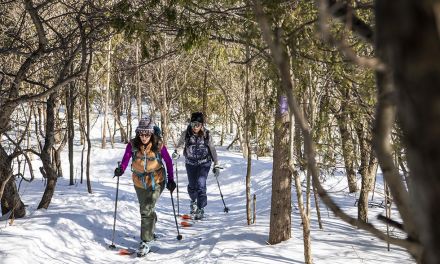Olympic Athlete – Erin Mielzynski Coach – Luka Senk
When it comes to snow sports, a well-prepared body can make all the difference on opening day. Downhill skiing and snowboarding demand considerable fitness, strength and stability from your legs and core. With the ski season rapidly approaching, now is the time to start activating your muscles to condition them for long, comfortable days on the slopes.
As a part of their pre-season employee preparedness program, Blue Mountain Resort has endorsed an eight-week “Move It Outside” training program. “These programs involve functional body weight movements performed at an intensity relative to the individual,” explains Dillon Fremlin, Director, Risk Management at Blue Mountain Resort. “The focus is on proper movement in order to create muscle memory to help prevent injury.”
“Our area has great natural snow that is supplemented by Blue Mountain’s amazing snow making operations,” says Dillon. “There is a vast selection of terrain that will challenge the physical ability of all levels of skier. A physical training program can help increase muscular endurance, which will certainly enhance the enjoyment of all that is offered at Blue Mountain Resort.”
Preventative exercises focusing on balance, leg strength, core stability and muscular endurance are imperative to a well-rounded injury prevention program. We’ve enlisted Luka Senk, MScPT, AFCI of Blue Mountain Physiotherapy & Mobility to provide five easy exercises to prep you for the demands of the Escarpment. Believe it or not, snow sports can be aerobic, which require the following fundamentals to optimize your performance while at the same time reducing your risk on the slopes. These exercises can be performed anywhere and with minimal equipment.
1.
BALANCE/PROPRIOCEPTION…
Exercise #1: North to South Drill
Why it is important: Having a well-tuned proprioceptive system will help sense when the ligaments, muscles and tendons are in danger and allow the brain to make an automatic response to avoid injury. It improves your reaction time at the first signs of danger.
How to perform: Close your eyes and stand on one leg. Jump forward in a North direction and return to centre position. Repeat in an East, West, South direction returning to the centre after each hop. If this is too difficult start with your eyes open and perform a smaller hop.
How often: 1 x per day, 5 rounds – change directions
2.
MUSCULAR STRENGTH…
Exercise #2: Single Leg Squat
Why it is important: Having dynamic strength on one limb will help re-center your body over your skis when you get caught back and help you stay in control.
How to perform: Start by sitting on a bench and kicking one leg forward. Attempt to stand up on one leg and sit down slowly with your hands out front. Modification of this would be to find a higher bench or rock so that your knee has reduced bend. Focus on the knee staying straight (It will want to cave in) and ensure that you are performing it slow and controlled.
How often: Start with 5 reps on each leg and progress to 2 sets of 10, 4 x per week
3.
Exercise #3: Single Leg Gluteal Bridges
Why it is important: Hamstring muscles work as a team with the ACL to help provide stability of the knee. Having strong hamstrings can reduce the risk of ACL injuries.
How to perform: Lie on your back with your knees bent. Place one of your heels on top of a bench. Straighten the other leg and raise it straight in the air. Place your arms on your chest and lift your pelvis up concentrating on squeezing your butt.
How often: Begin by trying to perform 10 reps with each leg, complete 2 sets.
4.
CORE STRENGTH…
Exercise #4: Partial Curl Up
Why it is important: Having a strong core will enhance your leg strength significantly.
How to perform: Lie on your back and bend your right leg keeping your foot on the ground. Place your hands under the small of your back and lift your shoulders blades up off the ground. Hold this position for 5 sec and repeat.
How often: 5 x per week, 5 reps with the right leg up and 5 with the left leg up. Start with a 3 sec hold and progress as strength improves.
5.
MUSCULAR ENDURANCE...
Exercise #5: Wall Sit
Why it is important: This exercise will allow your knees to function at a high level particularly when getting tired during the last few runs of the day.
How to perform: Stand with your feet against a wall with your feet shoulder width apart in front of you. Slide down the wall until your knees are flexed close to 90 degrees.
How often: 3 sets of 30 seconds and build up to 1 min.
Erin Mielzynski is a veteran of the Alpine Canada Alpin National Team and slalom specialist. Mielzynski’s 2017-18 season was one of her most consistent to date, finishing in the top-15 six times and jumped into the top-15 overall World Cup slalom ranking. She attended her third Olympic Games and finished 11th in the slalom. Erin had a historic breakthrough on March 4, 2012 when she won the World Cup slalom race in Ofterschwang, Germany—the first World Cup slalom win for a Canadian woman in over 41 years. Erin won Female Athlete of the Year at the Audi 2018 Canadian Ski Racing Awards and the Canadian National Championship slalom title.
Luka Senk, MScPT, AFCI, ADP, is a Registered Physiotherapist at Blue Mountain Physiotherapy & Mobility in Thornbury and has been trained in Acupuncture, Dizziness and Vertigo Rehabilitation, Running Analysis, Diabetes Prevention and Bike Fitting. He is also a NCCP Volleyball Coach and Alpine Skiing Coach.


